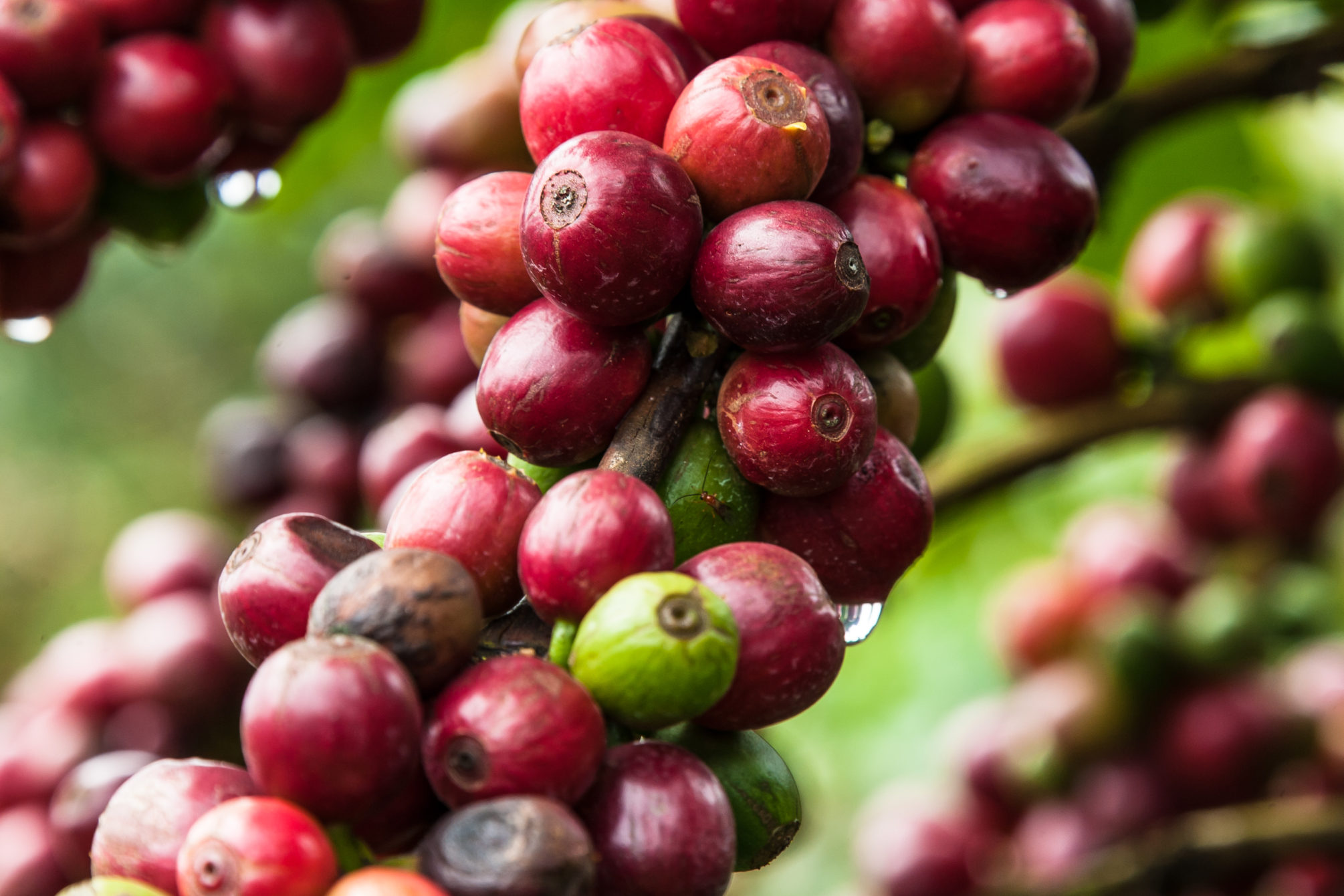Origin: Kenya
Region: Murang’a County
Producer: Kahete Coffee Factory
Altitude: 1800 masl
Region: Murang’a County
Producer: Kahete Coffee Factory
Altitude: 1800 masl
Variety: SL-28, SL-34, Batian, Ruiru 11
Process: Washed
Process: Washed
--
Kenyan coffee at its best - black currants, with layers of blueberries and hibiscus in the undertone. Great depth and super structured with a super sour mouthfeel. Kenyan coffee never ceases to impress us and this year's harvest from Kahete is no exception.
Kahete Coffee Factory was founded in 1984 and rests on 5 hectares of land serving the villages of Karunge, Gataragwa and Kirimiya. It is currently affiliated with the Rwaikamba Farmers Cooperative Society and is run by John Muchiri Mwangi.
Kahete Coffee Factory was founded in 1984 and rests on 5 hectares of land serving the villages of Karunge, Gataragwa and Kirimiya. It is currently affiliated with the Rwaikamba Farmers Cooperative Society and is run by John Muchiri Mwangi.

Kahete Coffee Factory is located north of Nairobi in Muranga County, near the town of Gitugi. This area of Kenya is experiencing a two-year production cycle with the early harvest from March-May and the late second season being from October-December. The main coffees grown here are SL-28 and 34 and Ruiru 11. SL-28 and SL-34 account for 97% of all coffee produced, while Ruiru 11 accounts for about 3% of total production.

Kahete buys its coffee berries from 600 small farmers, member producers, whose farms are located on average 1800 meters above sea level. This high altitude makes the coffee berries ripen more slowly. High altitude, combined with rich volcanic soil and careful cultivation help to highlight the inherent complex fruit flavors of the varieties SL-28 and SL-34. Both varieties are inherited from Bourbon and Moka and are named after the laboratory that promoted their wider distribution in Kenya during the early 20th century, Scott Laboratories.
Processing:
After careful hand-picking, the ripe coffee berries are taken to the factory by the farmers, where they are weighed and then processed using the washed processing method. Using a slicer with three sets of slices, the peel and fruit are removed from the inner parchment layer that protects the green coffee bean. Water used in processing is disposed of in soaking pits and recycled for preservation. After that, the coffee is left to ferment overnight to break down the sugar, before it is cleaned and soaked for another 24 hours.

This process increases the proteins and amino acids, which in turn increases the complexity, acidity and clarity of the cup. After soaking, the coffee is spread on the raised drying tables. The time on the drying tables depends on the climate, ambient temperature and volumes during processing and can take from 7 to 15 days in total.

Coffee in Kenya is graded according to the size and quality of the bean. The definition clearly defines the size, and to some extent they also assume that the quality is linked to the size of the bean, which in many cases is true - AA lots (with a screen size of 18+) are usually superior in quality.
Sustainability:
The area around Kahete is densely populated, so the factory has a strong focus on minimizing the potential impact and ensuring that local watercourses remain clean and unpolluted. In line with this, the factory has dug waterways away from the water source where used water has a chance to re-enter the soil.
Sustainability:
The area around Kahete is densely populated, so the factory has a strong focus on minimizing the potential impact and ensuring that local watercourses remain clean and unpolluted. In line with this, the factory has dug waterways away from the water source where used water has a chance to re-enter the soil.


